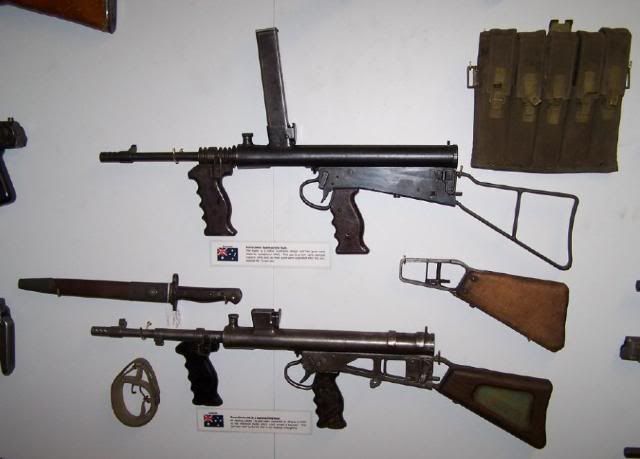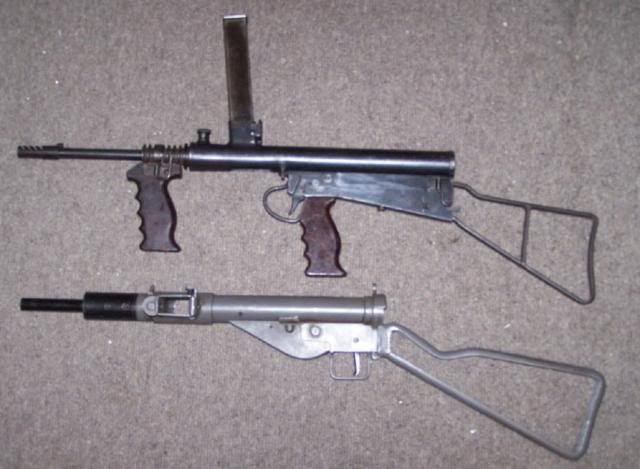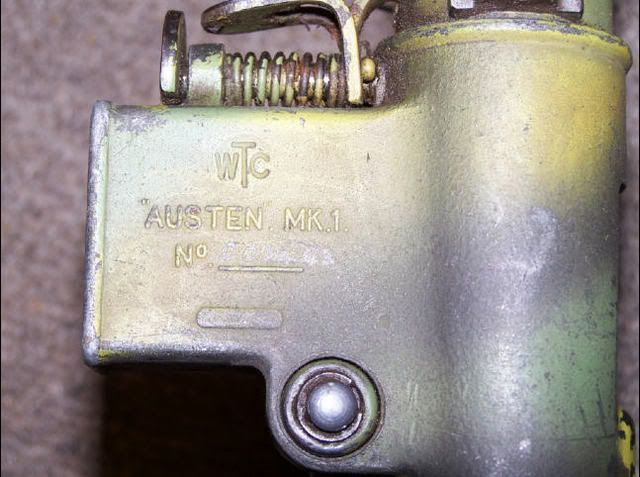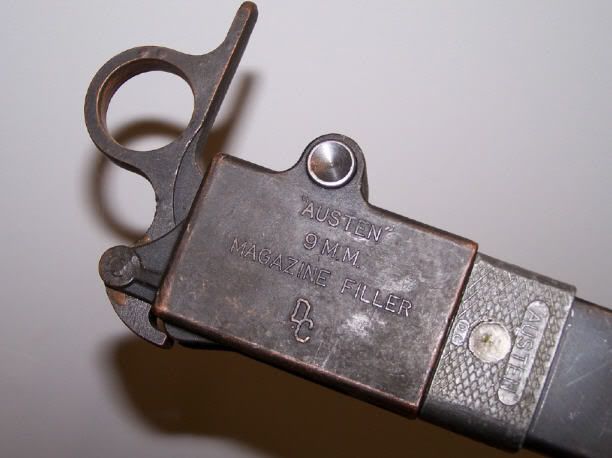Post by woodsy on Feb 7, 2009 22:21:12 GMT 1
Hi guys
I have been tearing my hair out (not that there is much of it) trying to download some images onto Photobucket. I have even tried a couple of other image hosting sites, but my protection software must be stopping me. I am going to need the assistance of Kevin again on this (sorry mate! ;D).
I have a tidy Mark 1 Owen and also a post-war rebuild Mark 2/3 (ex NZSAS in Malaya during the Emergency). Surviving Mark 1's are rare because they were all recalled in the late 40's to be rebuilt at Lithgow SAF to the 2/3 version. The later model had a bayonet mount and a new safety at the rear of the body which could be rotated around in front of the cocking handle. The original trigger safety was blocked with a screw. Out of the total of 45,433 Owens made (of which only 12,000 were Mark1, the balance being Mark 1* with the lightening cuts) 34, 662 were officially converted to the Mark 2/3. From the almost 11,000 remaining guns, wartime losses and officially destroyed worn-out guns have to be deducted. The Owen was used to a limited extent in Vietnam and all remaining stocks were destroyed in the 1970's.
The Austen (Australian Sten) guns shown represent each of the two makers, W T Carnichaels of Sydney and Diecasters Ltd of Melbourne. The Carmichaels gun is in the jungle camoflage that was applied to many of the Australian SMG's for service in Papua New Guinea (where both of my guns were recovered, as was the Mark 1 Owen). The Austen was not as reliable or well-liked as the Owen and was relegated to reserve status. Total Austen production was less than 20,000 guns and more than 19,000 were officially destroyed after the war. The Austen incorporates several features influenced by the MP40 such as the telescopic return spring tube, pistol grips, and folding stock. The folding stock legs also incorporate screw-in cleanimg rod and screwdriver as shown in a photo.
I hope the foregoing is of interest and allows you to see some scarce guns. Please ask if you have any questions.
I have been tearing my hair out (not that there is much of it) trying to download some images onto Photobucket. I have even tried a couple of other image hosting sites, but my protection software must be stopping me. I am going to need the assistance of Kevin again on this (sorry mate! ;D).
I have a tidy Mark 1 Owen and also a post-war rebuild Mark 2/3 (ex NZSAS in Malaya during the Emergency). Surviving Mark 1's are rare because they were all recalled in the late 40's to be rebuilt at Lithgow SAF to the 2/3 version. The later model had a bayonet mount and a new safety at the rear of the body which could be rotated around in front of the cocking handle. The original trigger safety was blocked with a screw. Out of the total of 45,433 Owens made (of which only 12,000 were Mark1, the balance being Mark 1* with the lightening cuts) 34, 662 were officially converted to the Mark 2/3. From the almost 11,000 remaining guns, wartime losses and officially destroyed worn-out guns have to be deducted. The Owen was used to a limited extent in Vietnam and all remaining stocks were destroyed in the 1970's.
The Austen (Australian Sten) guns shown represent each of the two makers, W T Carnichaels of Sydney and Diecasters Ltd of Melbourne. The Carmichaels gun is in the jungle camoflage that was applied to many of the Australian SMG's for service in Papua New Guinea (where both of my guns were recovered, as was the Mark 1 Owen). The Austen was not as reliable or well-liked as the Owen and was relegated to reserve status. Total Austen production was less than 20,000 guns and more than 19,000 were officially destroyed after the war. The Austen incorporates several features influenced by the MP40 such as the telescopic return spring tube, pistol grips, and folding stock. The folding stock legs also incorporate screw-in cleanimg rod and screwdriver as shown in a photo.
I hope the foregoing is of interest and allows you to see some scarce guns. Please ask if you have any questions.












